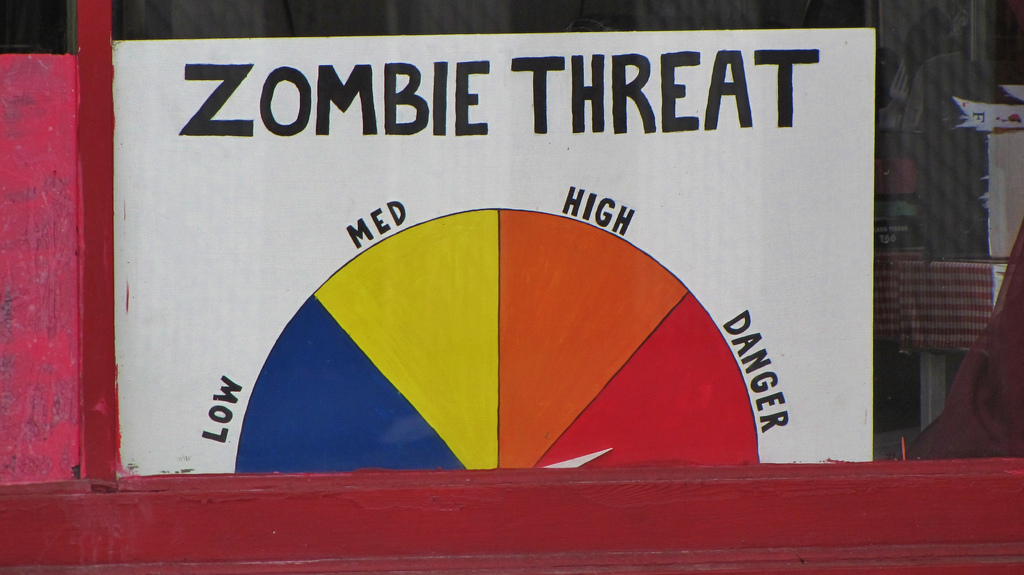Direct mail…it’s wanted dead and alive! So here are two secrets about direct mail fundraising and six things for you to do about it.
1. Direct Mail is dead. I’ve said it before and I’m going to say it again. Dead. Yesterday postage rates increased 2 cents to 44 cents for 1st Class postage. My quick math puts that about a 5% increase. That’s certainly not horrible compared to what has happened to other necessities–I long for the days of $2 gas. The Post Office continues to warn that increases will be a way of life if you’d like to mail a letter to your donors. You must make plans to move away from mail. Begin today working on expanding your website offerings. Today begin exploring the wide range of social media tools. Today plan an integration of your fundraising channels. You must begin exploring, experimenting and learning about the options “out there.” You simply cannot wait.
2. Direct Mail is dead but at work. Dead but not gone (okay barely alive). It is only a matter of time BUT Direct Mail continues to be the key fundraising channel for most. Direct mail is the primary source of revenue for most nonprofits. Few have managed to make the transition away from mailing at any price for a stamp. You probably can’t do without mail. That means you have to think strategically about mail.
Here’s how to do that:
-Promote online monthly giving. Today set up a monthly giving program. Or what is more likely, revitalize your old program. Monthly giving programs that are maintained and nurtured have amazing returns on investment. Plus many of your donors will love giving that way. Promote your plan in gift receipts and online. Give your donors opportunities for recurring credit cards, EFT and electronic checks. Once you get them signed up, don’t leave them in your regular mail strategy!
-Repetitive blast mailings are pathetic. Don’t get talked into mailing the same names, either in acquisition or in cultivation over and over and over on a short schedule. That doesn’t work today for a host of reasons. You always have to consider the motives of the mailer–are they making more money if you mail more pieces? Plus, what does mailing a donor (or prospective donor) 6 pieces of the same mail kit in a 6-week period tell them about your relationship with them? Ummmm… I think they aren’t going to be feeling the love.
-Rules of thumb are useless. There are so many variables on the fundraising landscape today that you need to nicely toss anyone who is quoting national rules of thumb out of your office. Sure there are averages. Yep, there are trends. But unless you are a national ministry, national rules of thumb are not helpful. If you are local or regional, that’s the baseline on what you need to know.
-Analytics are priceless. Instead of learning what is happening all over the country, find out what is happening with your donors. The story is right there in your data. Dig around. Get someone who knows what they’re doing to kick over the rocks. Get a second opinion on what is happening to your fundraising. What we’ve seen repeatedly is that it is possible to mail fewer pieces and receive more income (net income). That’s happening out there and it is within reach of more and more smaller ministries.
-Analytics must drive strategy. Sorry to be repeating myself, but the fact remains that strategy divorced from analytics is guessing. You don’t want to build your organization on anyone’s guess.
-Mail smarter. There are so many tools and techniques available that reduce the impact of postal rate increases. If you’re not using data hygiene services like NCOA or file dupe check, etc., find out what to do to implement these services immediately.
To put something in the in the mail now, you have to be even more wise than before. Mail is an expensive tool that requires sophisticated strategies for success. Figure out how to mail the right people at the right times and you’ll discover that although dead, direct mail can behave quite nicely.
So what are you doing to use this “undead” tool successfully?

Steve Thomas
Partner, Oneicity
(photo credits: mike krzeszak)

